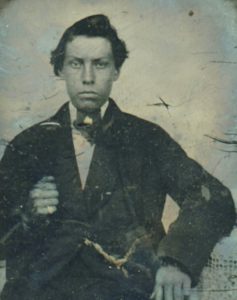
My grandmother Anne (Cassidy) Dwyer never met her father, Patrick Cassidy, who was killed in a Fall River (Massachusetts) mill seven months before her birth, but from the Cassidy side of the family, she knew a dozen or more Irish-born first cousins. Six sisters from one family alone came to Fall River to escape the grinding poverty of rural Ireland. Agnes Horan, a favorite cousin, arrived at age 20 in 1908. Agnes’s elder sister, Annie Driscoll,[1] paid for her passage. Agnes, in turn, brought over the next sister. In 1919, after working ten years as a domestic servant, Agnes married Joseph Bento, son of Azorean immigrants. Agnes died in 1930, leaving her husband and four small children. For the rest of her life, Nana Dwyer nonetheless maintained contact with Agnes’s children. Long after my grandmother’s death, I renewed acquaintance with the Bento family, sharing genealogical information and photographs. Continue reading Cousin confusion










